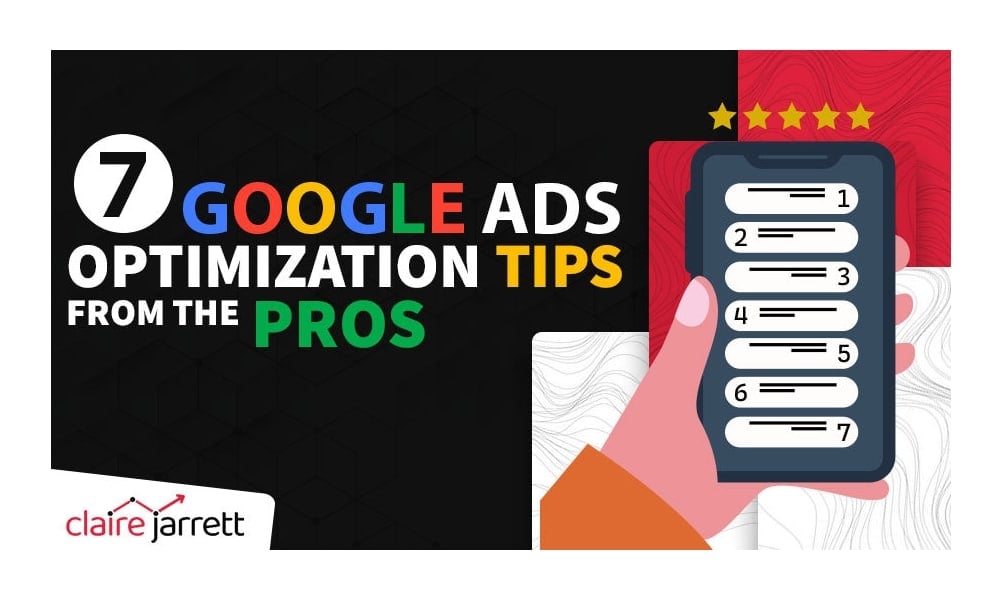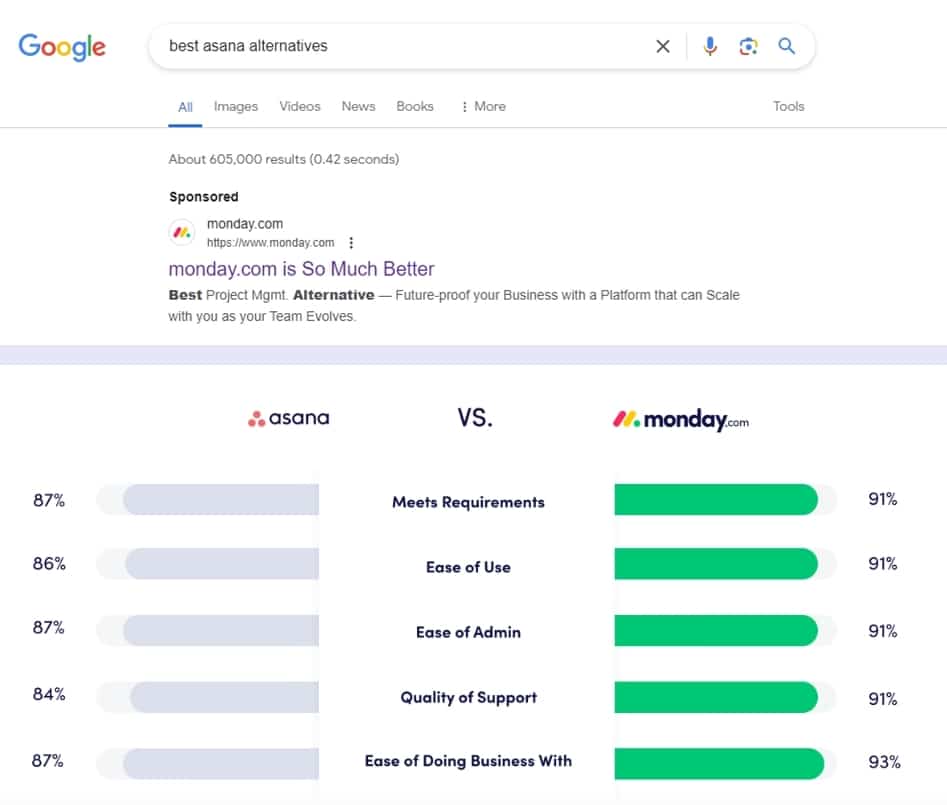7 Google Ads Optimisation Tips from Professional Advertisers

Last Updated on: 12th September 2025, 11:18 am
My best Google ad optimisation tips of all time are in this post. The following advice is based on my 15+ years of Google Ads experience as a PPC expert. Relying on these tips throughout my career has brought in 15,000+ customers to their businesses (and over £1 million in revenue as a result.)
If, like them, you want to dramatically improve the performance of your ads with just 7 tips, read on!
Google Ads Optimisation for Landing Pages
It’s so demotivating when you’re expecting one thing but end up with something completely different. It’s the same thing for online users: they want smooth sailing – not unexpected detours – when browsing.
Here’s a nugget of wisdom I often share with my clients: make sure your ad leads prospects straight to its corresponding landing page!

Believe it or not, it’s surprising how many ads out there steer people toward a homepage or a category page. You’re essentially kicking a would-be buyer right out of the sales funnel! (And it’s increasing your CPC, too.)
Read my guide with in-depth tips on how to optimise your landing pages.
Ad Rank Google Ads Optimisation: The Ad SEO
Just like in SEO, there are many ranking factors at play when it comes to your ads’ placements. Getting to the top requires not just a big bid, but also a stellar ad ranking.
Numerous factors can sway your ad rank, including the following:
- Your historical ad performance
- The quality of your ad copy and assets
- The specifics of your searcher’s location and intent
- Your business reputation
If you’re wondering where your ads are currently placed, you can look at your Top and Absolute Top metrics. Top refers to the placement of your ad above organic search results, while Absolute Top is the very first ad position on the page.
Google Ads Optimisation Tips to Get #1 Ad Rank
Now, here are a few key pointers to reach the top:
- Add relevant details about your business to boost your expected click-through rate (CTR) and consider including different assets.
- Keep your ads and landing pages laser-focused on what your customers are looking for. Irrelevant ads may still show up, but they won’t reel in as many clicks and could end up costing you more per click.
- Don’t skimp on your bid! It’s crucial to keep it competitive enough to go toe-to-toe with other advertisers vying for the same keywords.
Not to worry, I’ll be diving deeper into each of these Google Ads optimisation strategies shortly!
Adjust Your Bids (and Monitor Your Competition)
Automatic or manual bids? Which one should you choose? Well, it depends on your experience with Google Ads.
In general, I recommend manual CPC bidding – especially if you’re a beginner.
The work that goes into adjusting your bids and understanding how the system works will pay off and help you scale your campaigns, instead of just letting Google Ads try to manage everything for you.
(Spoiler alert: It doesn’t understand your customers as well as you do. It’ll never come close to how you or a professional PPC manager can scale your ROAS.)
Importantly, keep your eyes on the competition.
You can do this by going to the Auction Insights tab. Go to your Insights and reports tab, and navigate to “Auction insights” from the dropdown.
This tab sheds light on the overlap between your keywords and theirs. This is golden if you’re unsure of which terms to focus on or want to find “gaps” your competition isn’t addressing to maximise your budget’s worth.
You can also use tools like SpyFu.
Google Ads Optimisation for Keywords
Another question: Broad match or exact match keywords? Which to focus on?
I recommend exact match. It’s the most precise option that gives you a lot of control over which keywords your ads appear for. So, if you’re selling “red jumpers,” your ad will only appear for searches that match that exact phrase.
On the other hand, broad match places your bid for keywords that aren’t identical to your targets. If your keyword is “running trainers,” your ad might pop up for searches like “best trainers” or “affordable running sneakers.”
Don’t forget to get rid of negative keywords, i.e., all the keywords you don’t want your ad to appear for. These could be synonyms, keywords you don’t want to compete for (e.g., if you’re advertising expensive trainers, you wouldn’t want to appear for “affordable trainers”), and so on.
P.S. Give Dynamic Keyword Insertion a go where needed, especially if you sell different products within the same category.
P.P.S. Tired of only working with keywords? Try Google Ads audience layering!
Strengthen Your Ad Assets
Assets can significantly boost your ad performance, especially when they make a collective effort. Your account-level automated asset options include:
- Dynamic sitelinks
- Dynamic structured snippets
- Automated location assets
- Seller ratings
For example…
(These assets are called “account-level” because they’re automatically generated based on your account settings and data.)
By incorporating them into your ads, you’ll increase your ad’s prominence on the SERPs. It’s a vital part of Google Ads optimisation. Some asset types require manual setup, while others are added automatically by Google Ads – but only if they’re predicted to enhance performance.
When it comes to how many assets to add… the more, the merrier.
By that, I mean 4 or more assets.
“But, Claire, what if Google isn’t showing an asset I’ve set manually?”
Sometimes, despite your best efforts, certain assets might not show with your ads. Maybe the asset isn’t relevant to the search query, or perhaps your ad’s position and Ad Rank aren’t high enough for the asset to be displayed.
Configure Your Conversion Tracking
You wouldn’t drive through an unfamiliar place without a GPS. Similarly, you shouldn’t try to take the reins of your ads or approach Google Ads optimisation without knowing exactly how much you’re spending for each conversion.
Without correct conversion tracking, you won’t have insights into which keywords are actually bringing in sales. The key is to track as many conversion types as relevant, particularly the ones that currently matter most.
Whether it’s purchases, calls, downloads…the list goes on.
Tracking your conversions will help you understand, for example, which keywords are generating leads but at a high cost.
Similarly, you’ll understand which ads delivered the highest-quality leads who stayed with your business for a long time or ordered a particularly lucrative service.
Here’s how to set up and improve your conversion tracking and understand the Google Ads attribution models at your disposal!
Focus on the Right Solution for Your Ad Issue
When things go awry, figure out what’s wrong and then take action. For example, let’s say you’re puzzled about why your ad or asset isn’t appearing for a specific keyword. Time to troubleshoot!
Enter the Ad Preview and Diagnosis tool. Then, head to your Google Ads account, click on the Tools icon in the left-side navigation, and navigate to the “Troubleshooting” tab.
You’ll discover what might be wrong with your ad or asset. Plus, you can also use it to “spy” on the search engine results page where your ad should appear.
Type in the search term and other criteria (location and language), and the tool will show you whether your ad is eligible to appear in that scenario.
Anyone Can Create Winning Ads
Crafting effective ads requires time, patience, and plenty of professional insights. However, it’s up to you to analyse how your ads are performing. Every industry, business, and audience is different, so it’s necessary for you – as the owner or manager – to have hands-on experience in Google Ads.
You don’t want to just “eyeball” the results. Rather, lean on split testing tools like Google Optimize, Optmyzr, or Unbounce to identify statistically significant winners. These tools provide insights beyond mere gut feeling, and data-driven decisions are sure to follow.
These were my 7 Google Ads optimization tips! And since all great things come in sevens, start strong with a copy of my best-selling Google ads book, Rapid Google Ads Success and How to Achieve It in 7 Simple Steps.
Make this the year where you’ll drive 10x more qualified leads for your business!

